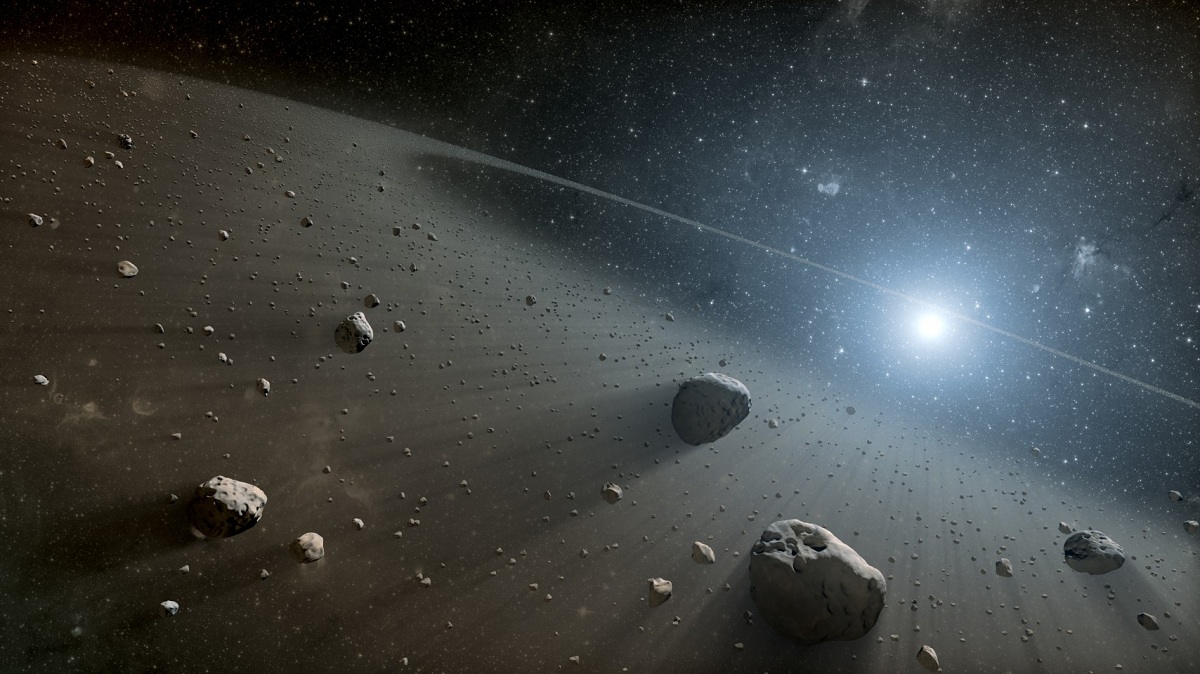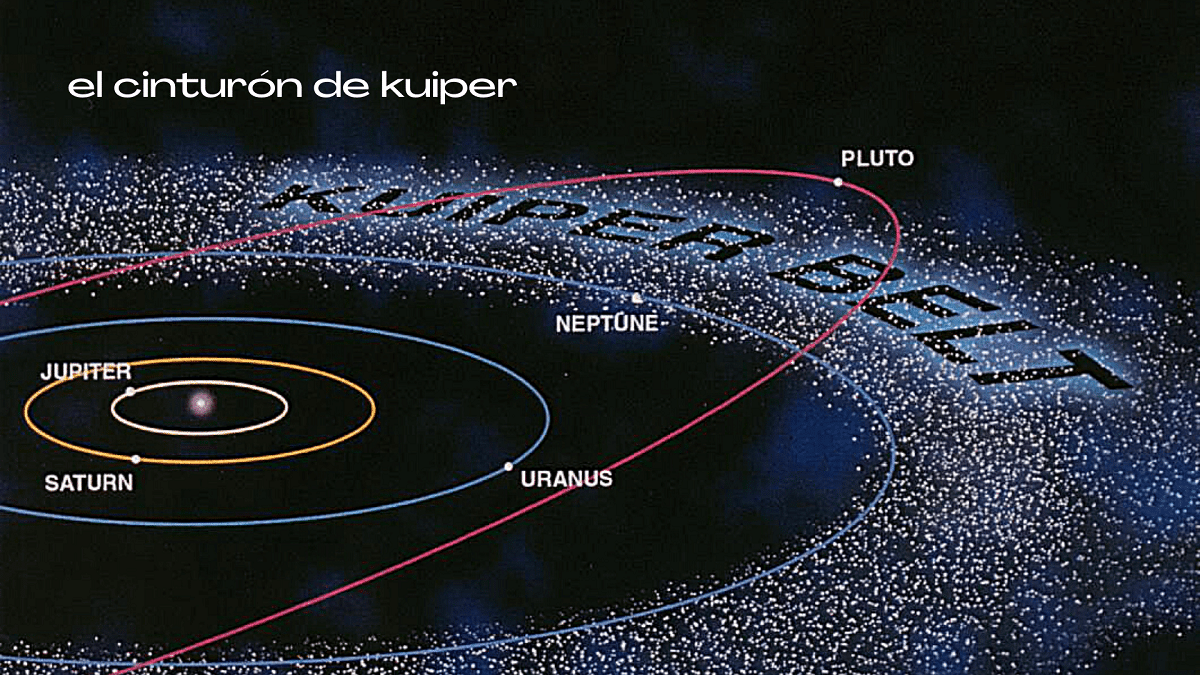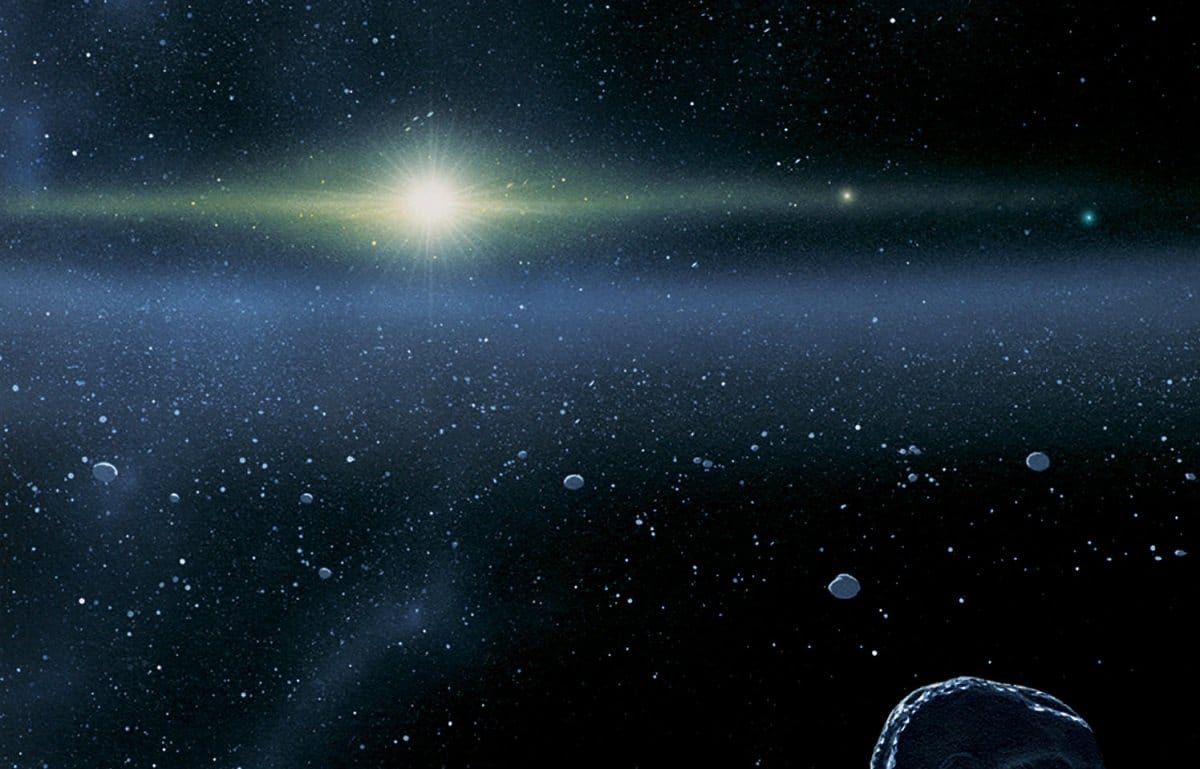
We know that the solar system does not end directly once we have passed the orbit of the planet Pluto. This solar system extends a little further by the kuiper belt. To get there, we must travel to the furthest reaches beyond Neptune and Pluto. Currently, the most distant object achieved by a spacecraft has been Arrokoth (2014 MU69). In the area where it has been explored, there is a region of the solar system that is very cold and dark and is called the Kuiper belt. Its importance lies in the fact that it contains the keys to understanding how the solar system was formed.
Therefore, we are going to tell you everything you need to know about the Kuiper belt, its characteristics and origin.
What is the Kuiper belt

The Kuiper belt is a donut-shaped area (called Tor in geometry) that contains millions of small frozen solid objects. These objects are collectively called Kuiper belt objects.
This is an area filled with millions of celestial bodies that could have formed planets, however Neptune's gravity has caused distortions in this space, preventing these small celestial bodies from coming together to form a large planet. In this sense, the Kuiper belt bears certain similarities to the main asteroids that orbit Jupiter in the solar system.
Among the celestial bodies discovered in the Kuiper belt, the most famous is the dwarf planet Pluto. It is the largest celestial body in the Kuiper Belt, although a new dwarf planet (Eris) of similar size was recently discovered in the Kuiper Belt.
To this day, the Kuiper Belt It is the true frontier of space, little known and explored. Although Pluto was discovered in 1930 and a belt of icy objects was predicted to exist outside of Neptune, it should be noted that the first asteroid in this region of the solar system was discovered in 1992. The study and knowledge of the Kuiper Belt is essential to understanding the origin and formation of the solar system.
Constitution of the Kuiper Belt

Currently, they have been cataloged more than 2.000 celestial bodies in the Kuiper Belt, but they only represent a small part of the total number of celestial bodies in this region of the solar system.
The elements of the Kuiper belt are comets and asteroids. Although they are similar, comets and asteroids have a different composition. Comets are celestial bodies made up of dust, rocks, and ice (frozen gas), while asteroids are made up of rocks and metals. These celestial bodies are remnants of the formation of the solar system.
Many of the materials that make up the Kuiper Belt have satellites orbiting them, or are binary objects made up of two objects of similar size, and orbit around a point (common center of mass). Pluto, Eris, Haumea and Quaoar are some of the moon-bearing objects in the Kuiper Belt.
At present, the total mass of the celestial bodies that make up the Kuiper Belt is only 10% of the mass of the Earth. However, the original matter of the Kuiper Belt is believed to be 7 to 10 times the mass of Earth, and objects that formed it come from 4 giant planets (Jupiter, Saturn, Uranus and Neptune).
Causes of reduced mass loss

The elements found in the Kuiper belt are called KBO's. The loss of mass in this frozen celestial belt is due to the erosion and destruction of the Kuiper belt. The small comets and asteroids that compose it collide with each other and divide into smaller KBOs and dust, which are blown out or into the solar system by the solar wind.
As the Kuiper belt slowly erodes, this area of the solar system is considered one of the origins of comets. Another region of origin for comets is the Oort cloud.
Comets originating in the Kuiper belt are produced when debris formed after KBO collisions is pulled into the solar system by Neptune's gravity. Comets originating in the Kuiper belt are produced when debris formed after KBO collisions is pulled into the solar system by Neptune's gravity. During the trip to the sun, these small fragments were trapped in a small orbit by the gravity of Jupiter, which it did not last more than 20 years. They are called short period comets or comets of the Jupiter family.
Where is it located?
As we have already mentioned, the Kuiper Belt is located in the outermost region of the solar system, which is the orbit of Pluto. It is one of the largest regions in the solar system. The closest edge of the Kuiper Belt is in the orbit of Neptune, around 30 AU (AU is the astronomical unit of distance, equal to 150 million kilometers, which is roughly the distance between the Earth and the Sun), and the Kuiper Belt is around 50 AU from the sun.
It partially overlaps the Kuiper Belt and extends an area called the Scattering Disk, which extends at a distance of 1000 AU from the sun. The Kuiper belt should not be confused with the Oort cloud. The Oort cloud is found in the farthest part of the solar system, in the farthest area, estimated to be between 2000 and 5000 AU from the sun.
It is also composed of frozen objects such as the Kuiper belt, shaped like a sphere. It is like a large shell, containing the sun and all the planets and celestial bodies that make up the solar system, including the Kuiper belt. Although its existence has been predicted, it has not been directly observed.
I hope that with this information you declared what the Kuiper belt is, the differences with the Oort cloud and learn more about our universe.